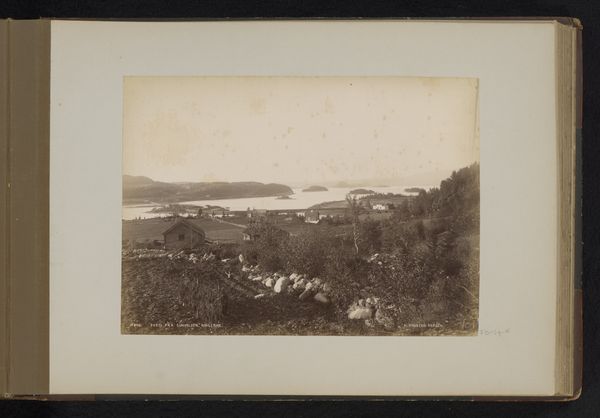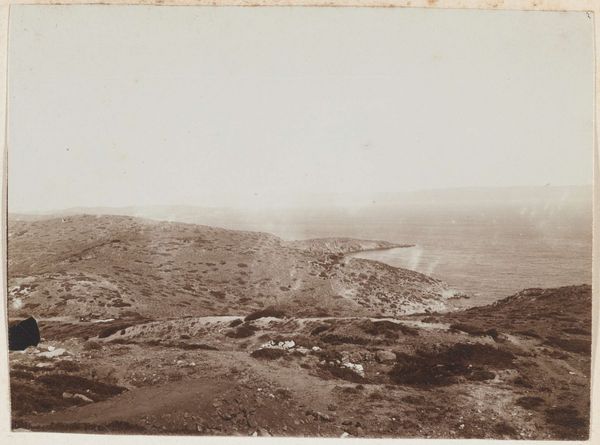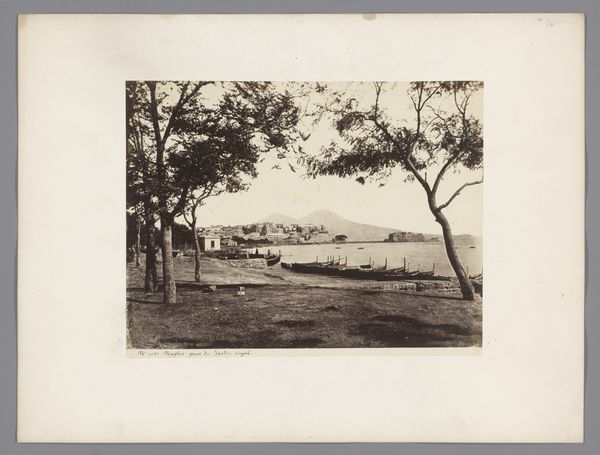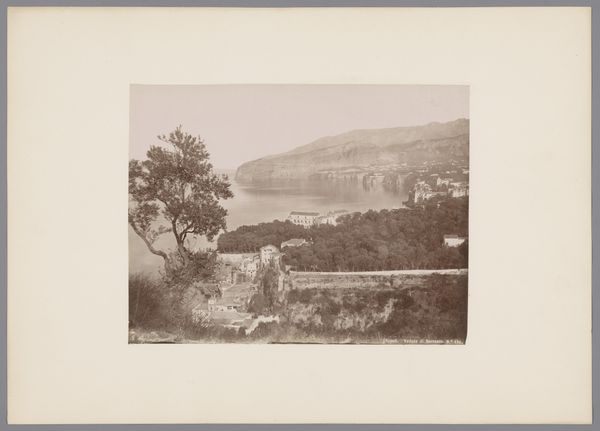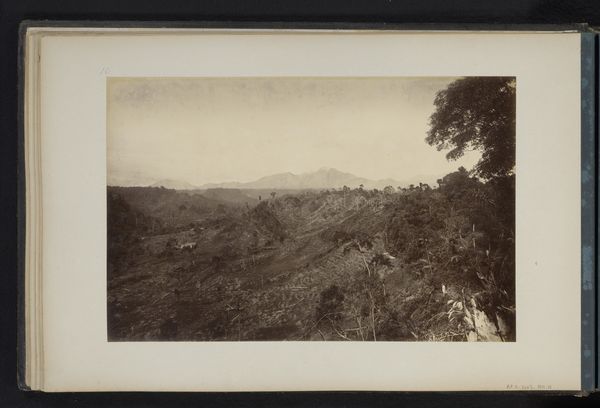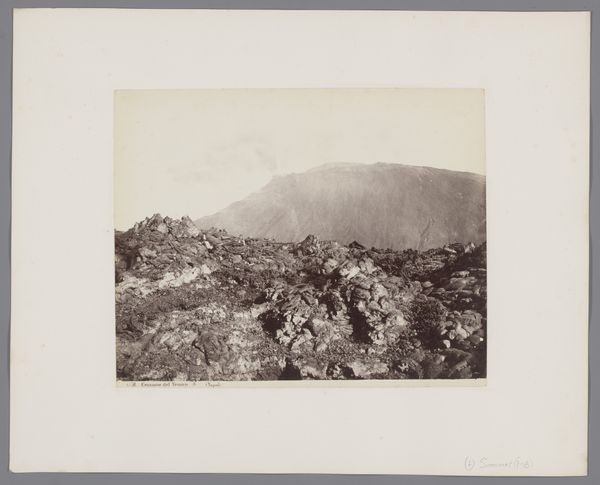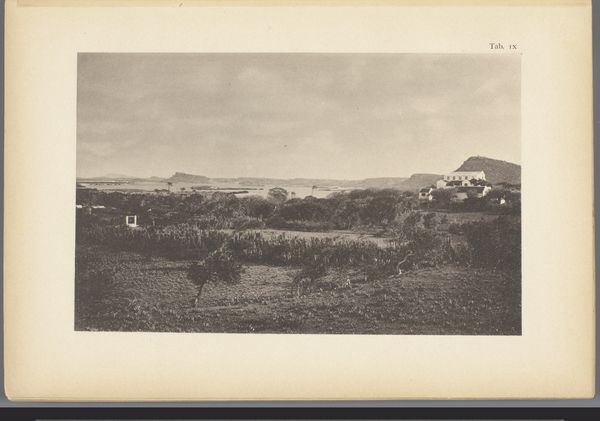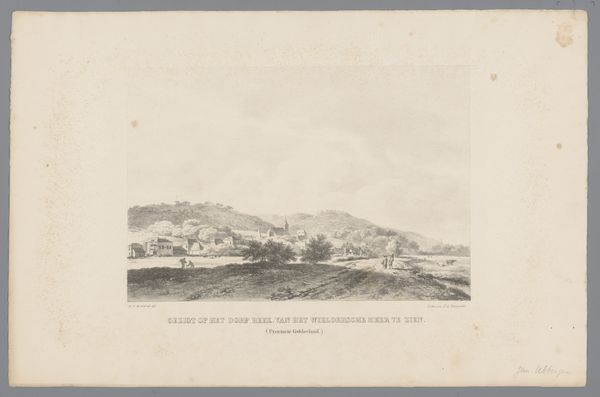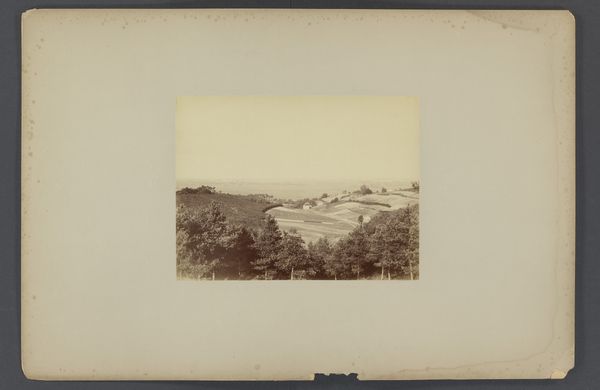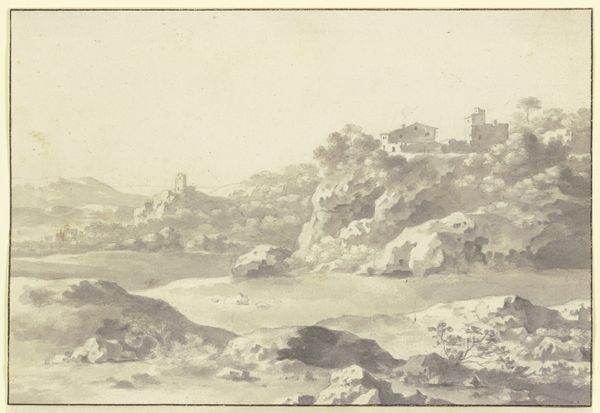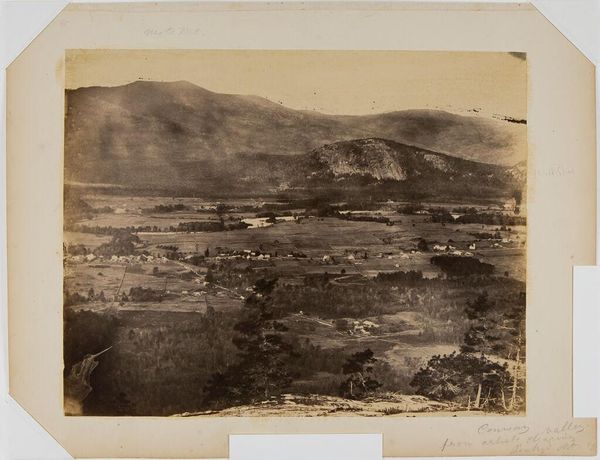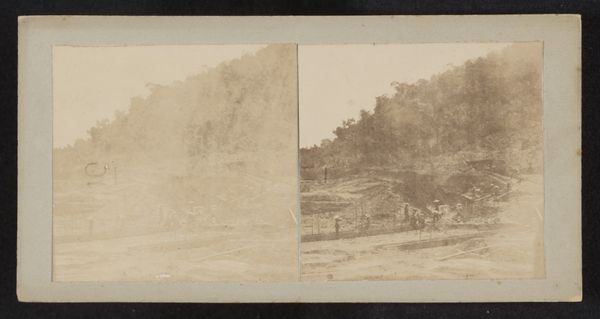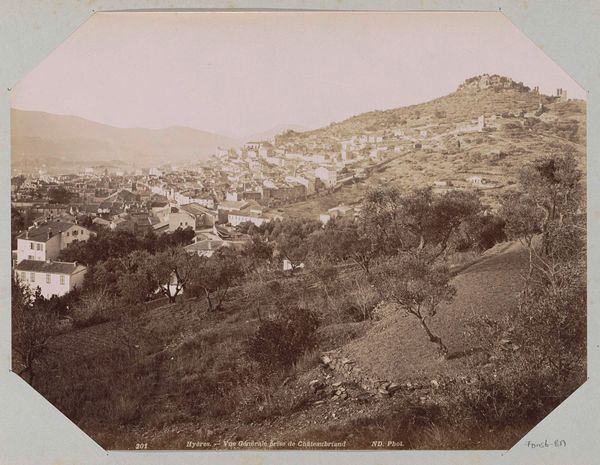
Dimensions: height 106 mm, width 146 mm
Copyright: Rijks Museum: Open Domain
Curator: This albumen print, "Naples Seen from the Tomb of Virgil," attributed to Roberto Rive and dating roughly from 1860 to 1900, presents a panoramic cityscape. It's currently housed here at the Rijksmuseum. Editor: My first impression is one of layered serenity, that the print’s sepia tones soften what might otherwise be a very imposing urban landscape, with Vesuvius looming benignly in the background. Curator: Absolutely, the process really impacts the mood. Albumen printing involved coating paper with egg white and silver nitrate, a technique that renders a high level of detail but also lends itself to this dreamy, almost painterly quality. Editor: And this elevation! Photographing from Virgil's supposed tomb suggests a very intentional positioning, an engagement with history and cultural legacy but who truly benefits from such nostalgia? Who is this idyllic scene for? Curator: That's a vital question. The choice of location speaks to a romantic vision of Italy favored by wealthy tourists and artists, an element deeply embedded in the artistic networks of the time and certainly a key market for this type of art. Editor: It reminds me that even landscapes are never neutral. They are imbued with narratives, power structures, class dynamics. That coastline, those villas below… someone profits from that view. Whose labor built it? Curator: Indeed, if we look closely, we might discern signs of urban development or even early industrialization, things easily overlooked in the pursuit of aesthetic beauty. These kinds of details can hint to a darker reality that exists. Editor: Right! It serves as a reminder that picturesque imagery often obscures the labor, inequality, and sociopolitical issues that make those very views possible, shaping identity and our ideas of beauty. Curator: Well said. It showcases the intersection of art, industry, tourism, and social hierarchy that helped drive 19th-century visual culture. It highlights an image with beautiful composition, carefully curated to conceal production's ugly truth. Editor: So, from a romanticized view, the city exposes layers of exploitation when investigated under the lens of historical materialism and activist interrogation. The picturesque scene is anything but passive when it begins a conversation about the unseen.
Comments
No comments
Be the first to comment and join the conversation on the ultimate creative platform.
